ART CITIES: Berlin-Daniel Boyd
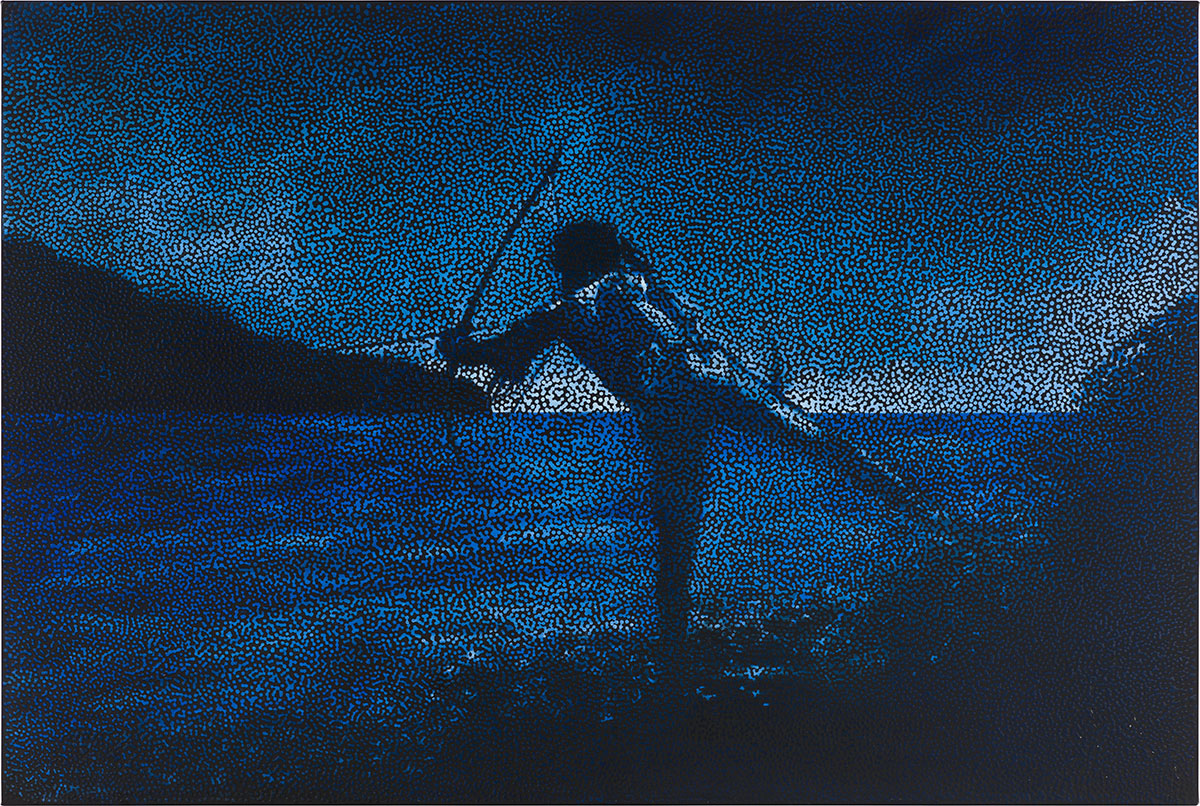 Working with an idiosyncratic painting technique that partially obscures the composition, Daniel Boyd refigures archival imagery, art historical references and his own family photographs, asking us to contend with histories that have been hidden from view. For two decades, Boyd has made an important contribution to unsettling the received Eurocentric history of Australia, while tracing the afterlives of iconographies as they travel through space and time.
Working with an idiosyncratic painting technique that partially obscures the composition, Daniel Boyd refigures archival imagery, art historical references and his own family photographs, asking us to contend with histories that have been hidden from view. For two decades, Boyd has made an important contribution to unsettling the received Eurocentric history of Australia, while tracing the afterlives of iconographies as they travel through space and time.
By Dimitris Lempesis
Photo: Gropius Bau Archive
Daniel Boyd’s exhibition “RAINBOW SERPENT (VERSION)” stages 44 of his paintings with two new large-scale installations that engage directly with the Gropius Bau’s historical architecture and emphasises non-linear connections between subject matter and ideas of temporality and space. Daniel Boyd’s work is characterised by a unique visual technique that references history painting while challenging the interlaced legacies of colonisation with cultural and economic imperialism. Boyd’s works draw on such sources as Indigenous knowledge productions, Gestalt theory, the writings of poet and philosopher Édouard Glissant and the artist’s own ancestral familial histories. The exhibition presents new works that reveal Boyd’s singular form of visual critique, which engages directly with the history of European cultural institutions, including the Gropius Bau’s. Located on a historical borderland, the Gropius Bau witnessed the unfolding of central violent regimes of the 19th and 20th centuries, such as European colonialism and the Nazi terror. During the Cold War era, the Berlin Wall running directly in front of the building’s current main entrance marked the division of Germany and the world into East and West. Boyd’s work reveals how such stories are intertwined and traces their passage across contexts. Non-First Nations people erroneously use the blanket term “Rainbow Serpent” to refer to various creation stories from individual First Nation communities in Australia. The use of the term reflects a lack of respect for the diversity of First Nations’ respective cosmologies. Whereas First Nations myths are as diverse as these communities themselves, the term “rainbow serpent” categorises and reduces the particularity of these individual cosmologies. By adding “(VERSION)” to the term in the title of his exhibition, Boyd points to the pluralism and specificities of First Nations worldviews and cultures.The artist’s works question Eurocentric visual systems and historical narratives. They trace the intertwined technologies of natural and ecological observation, colonialism and cultural oppression, which Boyd contrasts with First Nations’ relationships to nature, place, environment and practices of care and responsibility. In order to challenge Western-derived visual histories, paintings often subvert themes from classical antiquity, anthropological iconography and its impact on more recent visual culture. Both in Boyd’s chosen themes and his painterly technique, he introduces narratives of divergence, producing an aesthetic that embraces opacity. Boyd’s interest in the material transfer of images is revealed in works that re-appropriate photographs taken by missionaries and anthropologists, others derived from canonical Western art history, yet also reaching back to historical paintings of figures involved in the colonial exploitation of Australia. In “Sir No Beard” (2009), for instance, Boyd portrays Joseph Banks, who financed and accompanied the HMS Endeavour voyage (1768–1771) from London to Oceania and Australia, helmed by James Cook. A friend of George III, King of Great Britain and Ireland, Joseph Banks used his understanding of the plant world to perpetuate the British empire by planting tea in India and taking breadfruit from Tahiti to Jamaica as inexpensive food for enslaved peoples. Boyd’s version alludes to Pemulwuy, a Bidjigal resistance fighter who was executed by the British in 1802 and whose head was sent to Banks in London. First Nations activists advocate for its discovery and return to Australia.
Since the early 2010s, Boyd’s paintings employ dots, made with archival glue. In interplay with black paint, these dots produce a trembling overlay. This technique emphasises the right for a representation focusing on opacity instead of Western-derived visuality of transparency. Boyd examines darkness as a means of Indigenous resistance to the inherited ideas of European Enlightenment thinking and its insistence on illumination, transparency and disclosure. In the paintings, Boyd works with oil, charcoal and archival glue to rework diverse source materials, including images related to the artist’s familial history and its displacement. They also reference his family that includes members from the so-called “Stolen Generations” of First Nations peoples, who were (between the mid-19th century and the 1970s) forcibly distanced from their families during childhood. They were brought up without access to their cultures as a part of policies aimed to interrupt and disperse cultural traditions and identities. “Untitled (PAITA)” is based on an early 20th century photograph of an archer from the Solomon Islands in the South Pacific. The archer resembles other mythological portrayals in the exhibition, such as the ancient Greek figure, Achilles. However, Boyd’s depiction resists the heroic stance common in classical representations of the Greek warrior. The archer in Boyd’s painting is shooting a fish in the water: his target is unseen. This notion of gesturing towards the unseen – and, in a broader sense, towards the omitted parts of history – relates to Boyd’s painting technique. He transforms surface visuals by combining translucent dots with black interstices, resulting in works that both reveal and conceal. The painting “Untitled (TDHFTC)” depicts a photograph of Boyd’s sister getting ready for a dance ceremony. The dance ceremony is one example of the many ways Western culture was imposed upon First Nations children. Between the mid-19th century and the 1970s, they were forcibly removed from their families and communities by the Australian government. These children, known as the “Stolen Generations”, were placed in foster homes, governmental institutions and church missions, where they were forbidden to engage with any form of culture related to their First Nations heritage. By choosing an image of his sister continuing to perform the dance forced upon the “Stolen Generations”, Boyd challenges questions of cultural heritage and authorship, while also showing how re-appropriation can be a form of resistance. The painting “Untitled (MLBATS)” shows a view into a mangrove forest along the coast near Gimuy/Cairns in North Queensland, Australia, where Boyd grew up. The source image of this painting is a photograph by Boyd’s nephew. Mangroves live on coastlines between the high and low tidelines. Their roots grow below and above the water’s surface. Once a seed falls into the water it floats until it finds solid ground to grow new roots. The dense canopy of interlacing branches makes it impossible to discern single branches; similarly, the tree’s shoreline position unsettles the division between land and water. The mangrove can be seen as a symbol for Boyd’s approach to interconnecting narratives that travel through time and space. It also reflects his painting technique that oscillates between what is seen and what is protected from view. Boyd challenges the colonial gaze, re-employing photographs as source material taken in colonial contexts, including a voyage by the London Missionary Society and the Anglican church to Pentecost Island in Vanuatu, where Boyd’s great-great-grandfather lived before being violently removed to Queensland. Australia’s economic capital is historically derived from the free labour of exploited and subjugated First Nations and Pacific Island peoples, producing inequalities that exist to this day.
Photo: Daniel Boyd, Untitled (PAITA), 2022, oil and archival glue on canvas, 74 x 103 cm, © Daniel Boyd, Courtesy: the artist and Roslyn Oxley9 Gallery, Sydney
Info: Curators: Stephanie Rosenthal and Carolin Köchling, Gropius Bau, Niederkirchnerstraße 7, Berlin, Germany, Duration: 23/3-9/7/2023, Days & Hours: Mon & Wed-Sun 11:00-19:00, www.museumsportal-berlin.de/
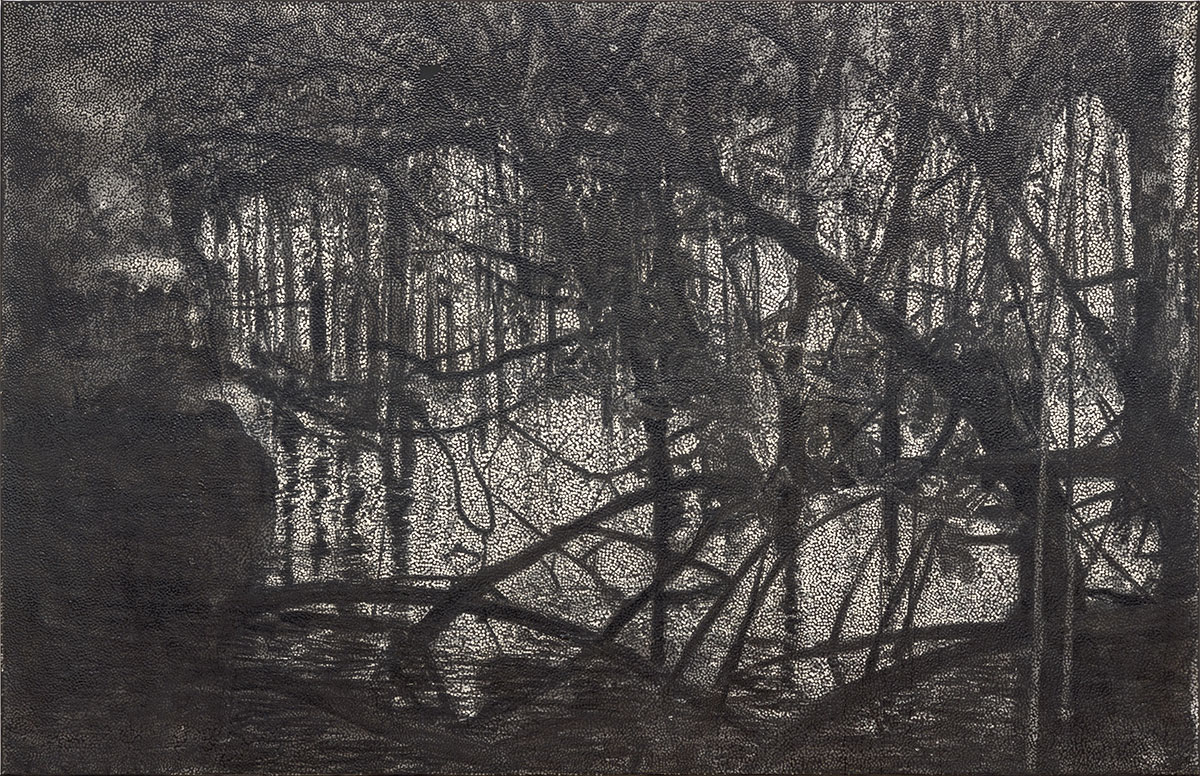
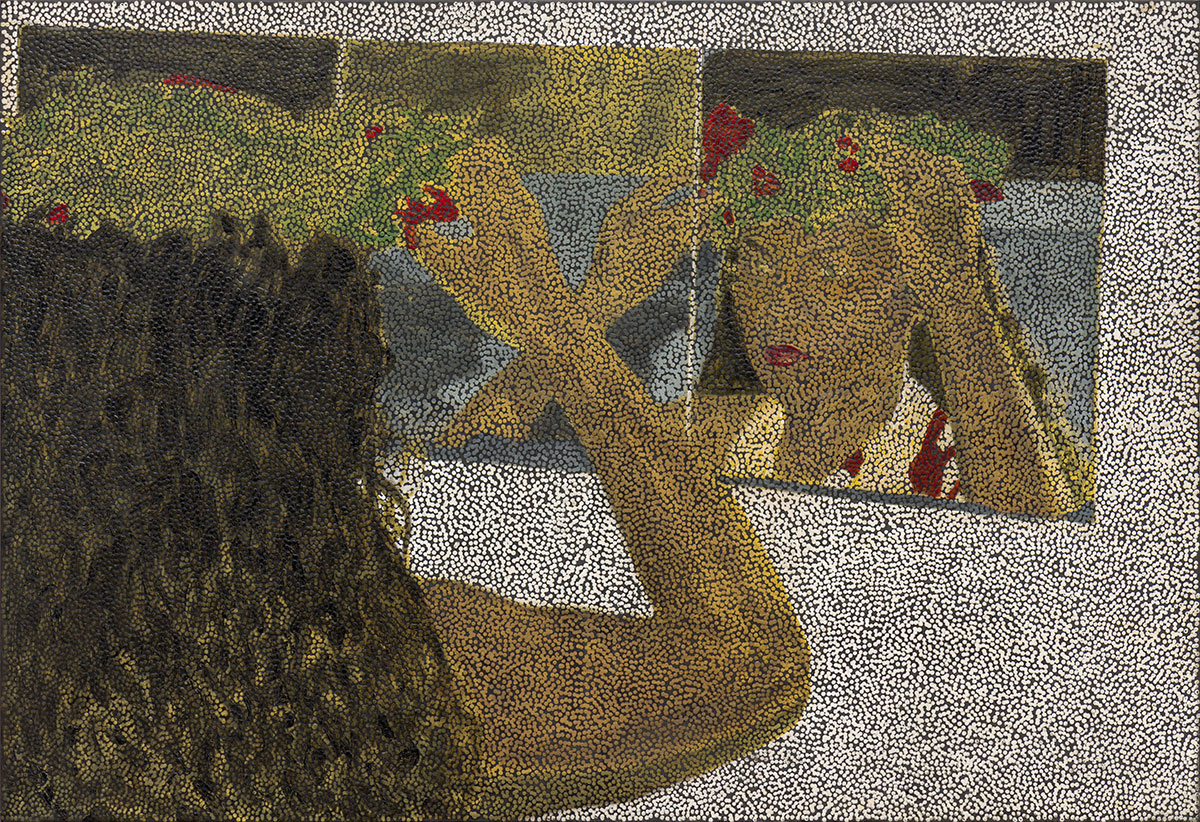
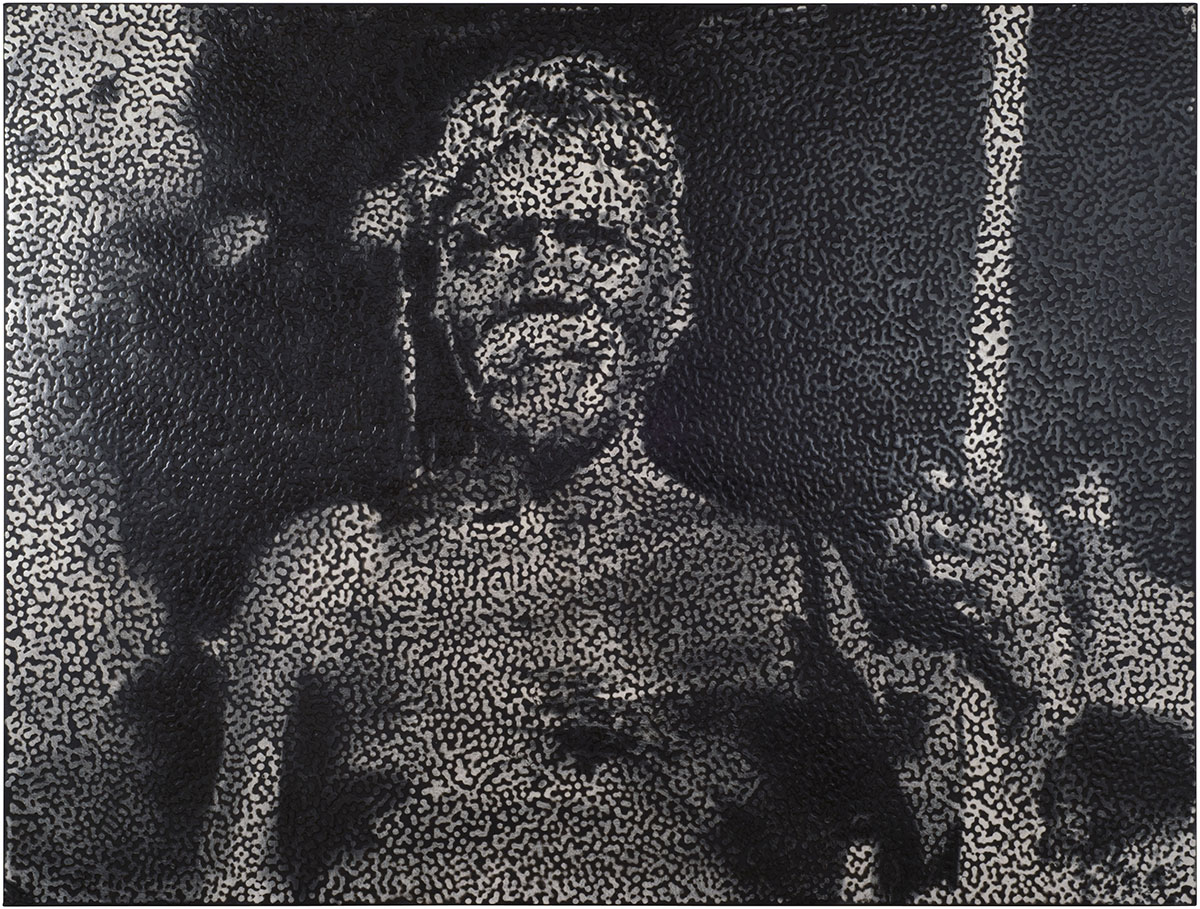
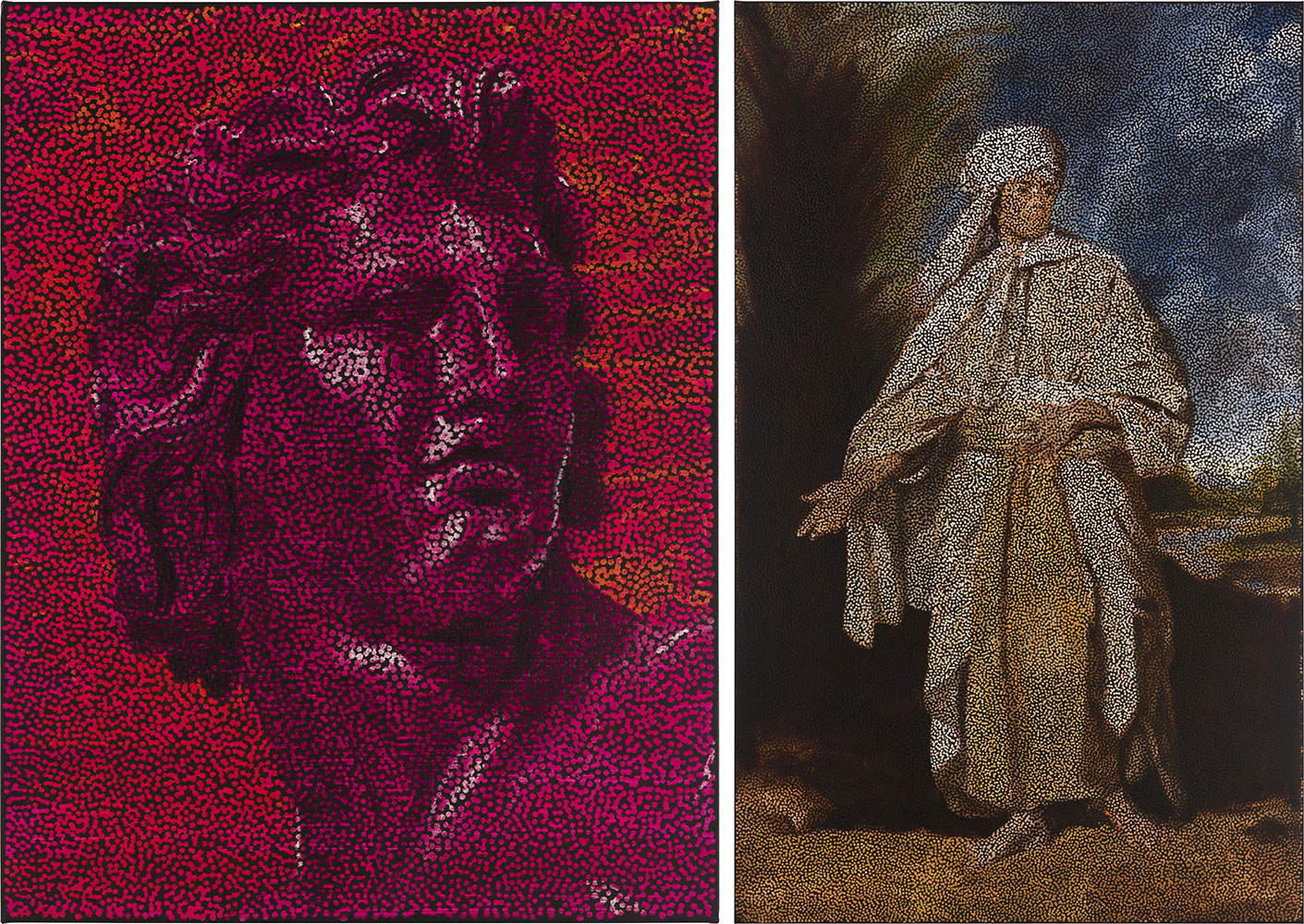
Right: Daniel Boyd, Untitled (RMUFWM), 2022, Painting, oil, acrylic, charcoal, pastel and archival glue on linen, 236 x 146 cm, © Daniel Boyd, Courtesy: the artist and Roslyn Oxley9 Gallery, Sydney, photo: David Suyasa
